Both plants and animals can perform photosynthesis, but plants do it more often.
False
These are the phases of the cell cycle in order:
Interphase, Prophase, Metaphase, Anaphase, Telophase, Cytokinesis
(Remember, Mitosis makes up 4 of those phases in the middle and can be remembered with the acronym PMAT).
This is the form of energy created by cellular respiration
ATP energy
Plants can make their own food through photosynthesis which makes them this type of organism
Autotrophs
This is the longest phase of the cell cycle
Interphase
Chlorophyl is the pigment that gives plants their green color and helps absorb light energy
True
Identify and describe what happens in the phase of the cell cycle shown below: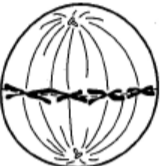
This is Metaphase, where the chromosomes line up in the middle of the call.
These are the REACTANTS or inputs of Cellular Respiration (know the words and the chemical formulas)
Glucose ( C6H12O6 ) and Oxygen ( 6O2 )
This is where photosynthesis takes place:
The chloroplasts
Identify and describe what happens during this phase of the cell cycle:
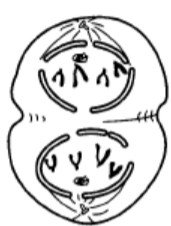
This is telophase where two new nuclei form
Cellular respiration has 5 steps
False
Identify and describe what happens during this phase of the cell cycle:
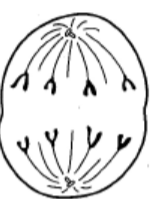
This is Anaphase where chromosomes move AWAY to opposites ends of the cell
This is the full equation for cellular Respiration
C6H12O6 + 6 O2 --> 6 CO2 + 6 H2O + ATP Energy
(Glucose and oxygen will produce carbon dioxide, water, and ATP energy)
Explain in as much detail as you can, what photosynthesis is
Photosynthesis is the process of plants making their own food for energy by taking in sunlight, carbon dioxide, and water to make glucose and oxygen.
(Bonus understanding: The energy from the sun is stored in the bonds of the glucose molecule allowing it to be transformed later into ATP for the plant and other organisms)
Identify Structure X
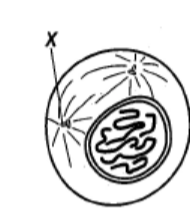
Centriole
Fermentation is the process of creating energy without the use of Oxygen
True
Identify and describe what happens during this phase of the cell cycle (note: both pictures are part of the same phase)
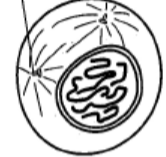
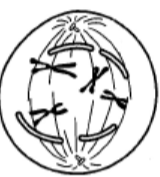
These are both Prophase where chromosomes condense and become visible and spindle fibers form at the centrioles
Identify where the stages of cellular respiration take place and describe what happens in each stage.
Stage 1: Cytoplasm. Glucose is broken down into smaller food molecules (pyruvate)
Stage 2: Mitochondria. ATP energy, water, and CO2 are created
This is the full equation for photosynthesis:
Sunlight + 6 CO2 + 6 H2O --> C6H12O6 + 6 O2
(Sunlight, carbon dioxide, and water will produce Glucose and oxygen )
Compare photosynthesis and cellular respiration (how are they similar and how are they different?)
Photosynthesis and cellular respiration are opposites, meaning the reactants of one are the products of the other.
They both involve energy, are necessary for survival, and use/produce similar molecules.
Photosynthesis uses light energy while respirations creates ATP energy. Photosynthesis takes place in the chloroplast while Cellular respiration happens in the cytoplasm and mitochondria. Autotrophs do both while heterotrophs can only do cellular respiration.
Plants take in ATP energy through their roots to perform photosynthesis
False
Identify and describe what happens during this phase of the cell cycle:
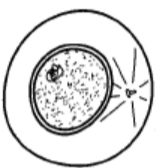
This is Interphase where a cell prepares to divide by growing and replicating its DNA and organelles.
Identify how organisms can produce energy without oxygen and why this is important
Fermentation is the process and it is important because it allows organisms to produce energy when they do not have enough oxygen available, for example during physical exertion (working out/ high energy movements)
This is why photosynthesis is important to animals
Photosynthesis produces oxygen which other living things need to survive and do cellular respiration. It also stores energy in the form of food that other organisms (heterotrophs) can eat.
What does ATP stand for?
Adenosine Tri Phosphate